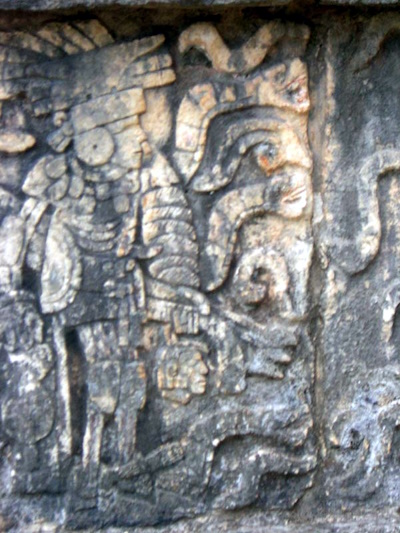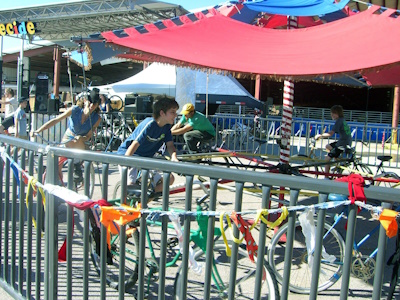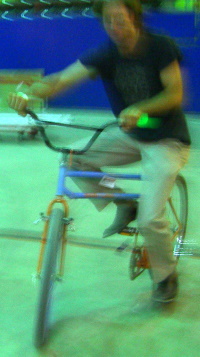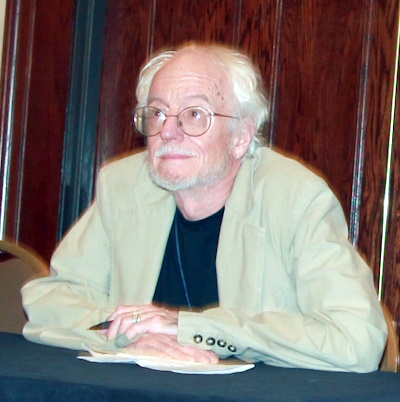James Morrow "The Last Witchfinder": FACT reading group discussion
Another review of a book by James Morrow!
Everybody started "The Last Witchfinder" by James Morrow. Half of the people finished it. Everybody but one person read James Morrow before. The novel chronicles the life of Jennet Sterne, a fictional 17th century woman. After her beloved aunt and mentor is accused of witchcraft and executed, the 12-year-old Jennet decides to make it her life mission to put an end to witch trials. For that she needs to come up with an incontrovertible argument that would convince everybody that the notion of witchcraft is absurd and impossible. She devotes her life to this grand task, and it takes her on many interesting, even improbable adventures.
Everybody said the book was beautifully written. The prose was full of archaic turns of phrase, yet it didn't seem stilted or artificial. I personally was amazed that the characters' speech consistently sounded like it really could have been spoken three centuries ago. It must have taken some effort for a writer to maintain this prose style throughout a 500+-page-long novel!
The book too realistic for some people
Nonetheless, a few people commented that the book was very easy to put down. It is written in a picaresque form, which is uncommon nowadays, and it may distance a reader from the characters, so that it's difficult to get engrossed in a page-turning way in a book. Some readers admitted having wanted something a bit more escapist at the moment, so they did not continue. One reader said he could not enjoy the story, as good as it was, because it was too realistic. While appreciating the beautiful prose and the philosophical depth of the novel, he "could not forgive" James Morrow for torturing the reader. "I cared about the characters and I really feared for what was going to happen to them. I really figured he was going to kill [the protagonist]. [...] I know a little bit about witchhunting, and just the knowledge of pennyroyal for birth control was sufficient to be tried as a witch. Just herbal practices. There is an estimate that "Malleus Maleficarum" (the witchhunters' handbook) cost the lives from 600,000 to 9 million people. In Europe there were at least 40,000 documented witch trial cases in 5 years. It was unpleasant reality. This book was unpleasant for that reason. It was so hideous. I read SF to escape. If I wanted to find [about real-life horrors], I would turn on the news. [...] It's not that it wasn't well written, I just didn't want to be there, I didn't want to experience this." (Despite that, he read through the end.)
On the other hand, another reader found the witch trial scenes funny at the beginning; a scene where a accused witch is being "floated" even reminded him of Monty Python. However, as he realized the witchhunting specifics described in this book were historically accurate, he started to find them a little disturbing.
I myself admit I found this book very disturbing and emotionally harrowing. It was hard to read about a brave, admirable heroine who risks everything, including her life, for an improbable cause. I was pretty sure that the forces she was up against were going to kill her. I even had to look to the end of the book to see how it turns out, something I almost never do. However, the fast pace of the book kept me engaged. There were a few of us who found the story riveting and did not want to put the book down.
A discussion of the book's philosophical themes
It wasn't just the adventures that kept people absorbed in the book, but first and foremost its philosophical themes. One reader has a special interest in the time period the book is set in, the era when Newton made his great discoveries. He has read biographies of many members of the Royal Society, the salient points of which he generously shared with us. I myself was intrigued by the Newton era when I read Neal Stephenson's "Quicksilver", but in my humble opinion, James Morrow did a better job portraying this historical period than Neal Stephenson. At the very least, I think James Morrow shows us very convincingly how the principles of scientific inquiry came into being -- something "Quicksilver" doesn't do as well.
What is the significance of the book-writing-a-book device?
The narrative in "The Last Witchfinder" is contained in an unusual framing device. The story is presented as if written by another book, Newton's "Principia Mathematica". Interspersed with the main story are Principia's personal reflections. We learn from them that Newton's masterpiece is engaged in a centuries-long war with "Malleus Maleficarum", in which each book tries to destroy the existing copies of the other, sometimes resorting to comical measures, such as sending troops of insects to eat the enemy's volumes. "Principia Mathematica" also admits it's been in love with Jennet ever since it laid eyes on her. One reader said she found those confessions of love very tender, but very weird; and another reader countered: "Hey, people love books -- why shouldn't a book love a person!" The notion of a book as a sentient being and an author of another book is probably the only science-fictional element in "The Last Witchfinder". But even then, it is only a framing device. Other than that, readers noted, the only way "The Last Witchfinder" could fit within the SF/F genre is it if were put it in a "secret history" niche subgenre.
But the book-writing-a-book device isn't merely for grins; in fact, it inspired some of the more interesting discussions in the reading group. One reader wondered, why was this framing device was needed at all? Perhaps because Morrow was trying to make a point that books have lives independent of what their authors intended? He said: "When an author releases the work into a literary world, the author can't say what it means anymore. It means what it means to the reader. Newton's "Principia Mathematica" feels very strongly about the demon hypothesis, even if Newton didn't. And I think Morrow is quite correct that the character's conclusion that Newton's Principia is the death knell of demon's hypothesis is quite true, even though Newton didn't see it that way."
Indeed, Jennet got out of "Principia Mathematica" more than Newton intended: it prompted her to establish the principle of "sufficiency of the world" -- the idea that phenomena of the world can be sufficiently explained by the natural world itself, without resorting to demons and the supernatural.
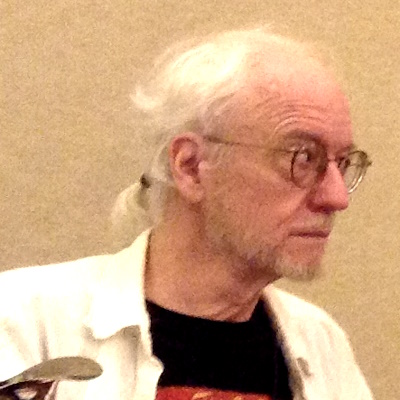
James Morrow being interviewed at ArmadilloCon 2015, a speculative fiction convention in Austin, Texas
As for me, I thought the concept of a book as a conscious entity was simply meant to underscore the importance of wars of ideas that have been going on for... well, for as long as there have been ideas. One reader speculated that the war between rationalism and superstition did not die off in the age of Enlightenment; quite the opposite, it intensified. "Witchhunts began to happen in Renaissance, at a time in human history when we got a greater command of the physical world," he said. "I've long been convinced that religious fundamentalism is a product of Enlightenment, not a reaction to the Enlightenment. Because it was then that we started to take the world literally enough, not as a collection of metaphors. Then we started taking those commands about not suffering a witch to live literally. At the same time, Newton's view of the world really did destroy that."
Regardless of the reasons why James Morrow chose to make "Principia Mathematica" a sentient being, many people in this group are no strangers to a feeling that books have lives of their own. One reader said she had this point made very clear to her at one time during her college days. She was taking a tour of the restricted rooms of her university library. One of those rooms contained one of the early editions of "Principia Mathematica". Suddenly she realized that book was worth more than her life, because in case of fire, the room where the book was would be filled with flame retardant gas, which would kill her.
The protagonist too modern to be realistic... or is she?
A couple of us thought Jennet, while a very admirable and brave character, was a bit too unrealistic for a 17th century woman. She was very independent, treated men as equal and expected to be treated as equal by them. Her notions about women's place in the society were those of a 21st century woman. We found it unlikely that she, as well as her mentor, aunt Isobel, could have been brought up with such modern attitudes, and that they were completely unaffected by expectations of submissiveness and passivity that were beaten into many of their contemporary women. However, one reader, who is better familiar with that time period, said there were a lot of very educated women in the 1600s and 1700s, who wrote books, even very technical books. So while such women were unusual, it's not like they didn't exist.
Personally I have to say I liked "The Last Witchfinder" very much, both because of its beautiful prose and because of its themes: heroism, going against the dominant system of beliefs, trying to single-handedly right monstrous wrongs while pursuing scientific understanding. I think I would have liked this novel just for that, even if it wasn't so well written, even if storytelling wasn't so engaging. But since it has those other qualities too, this book is a real gem. I have only read two books by James Morrow so far, but I think he's going to be my Favorite Writer Of The Year. (Last year's title went to Robert Charles Wilson.)








